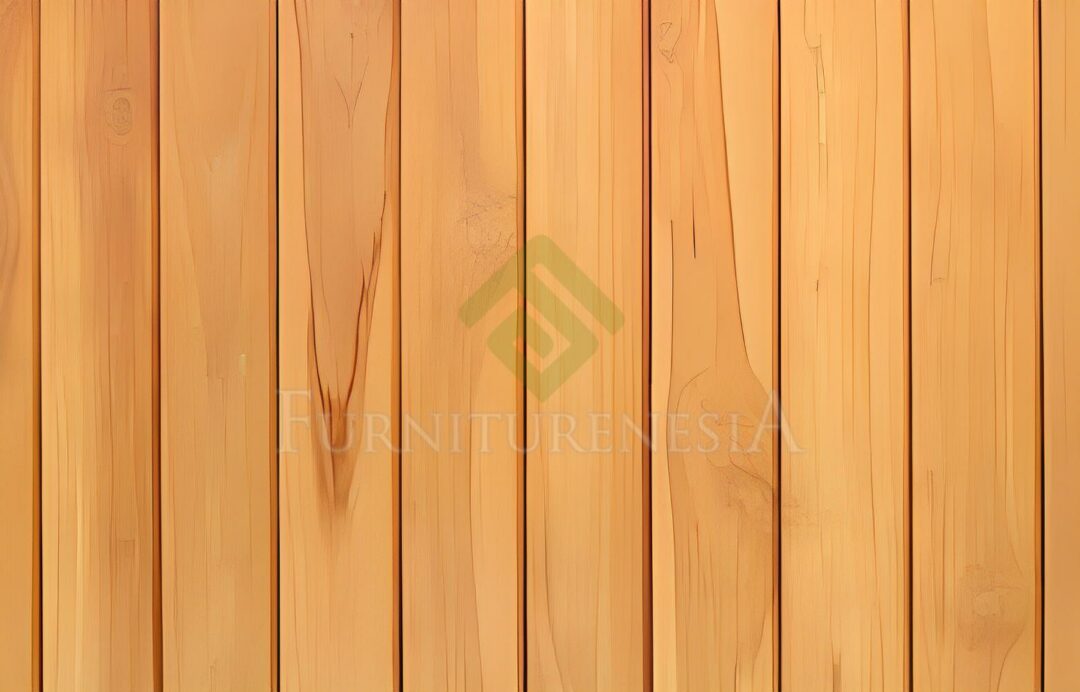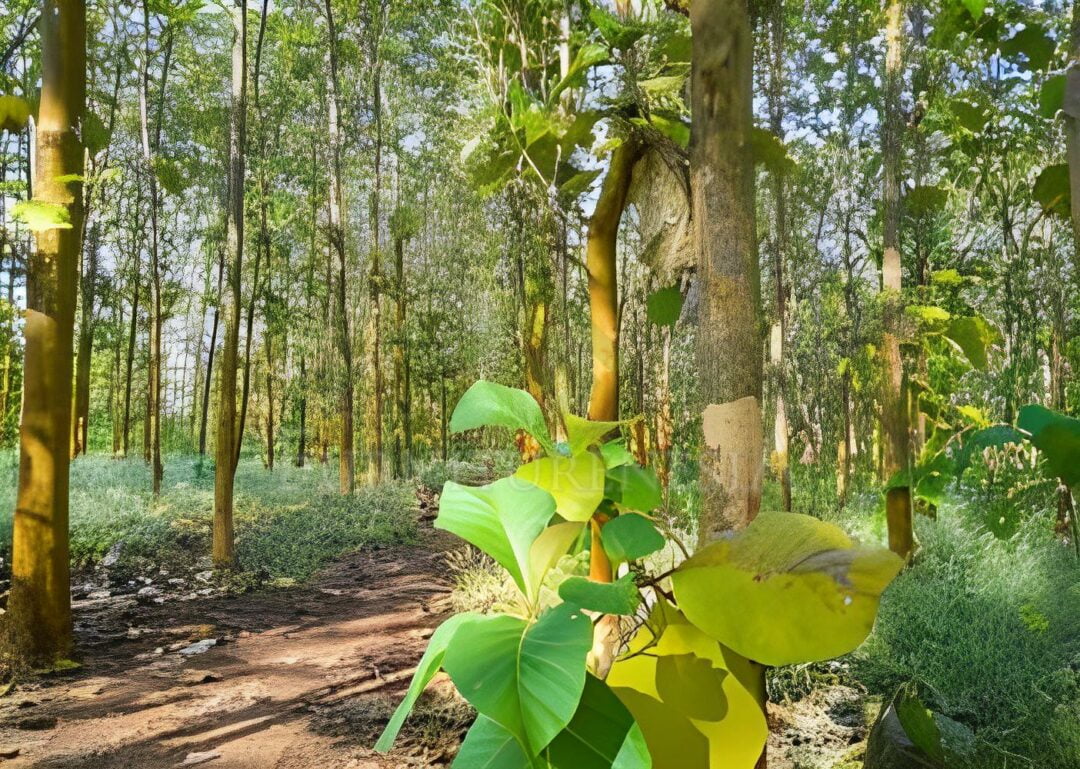What is the Color Range of Teak Wood?
Teak wood has a distinct golden brown color that darkens into a rich patina over time. As “what color is teak wood” begins to weather, its color evolves into varying shades of brown with grey undertones. The natural oils, texture, grains and exposure to environmental elements all contribute to the color range you can expect from teak lumber.
With proper care and maintenance, the warm honey tones of newly milled teak matures into a refined antique appearance that makes this tropical hardwood a popular choice for residential and commercial spaces alike. Understanding what impacts the color of teak enables you to better leverage its natural aesthetic qualities.
What is Teak Wood?
Teak is a tropical hardwood prized for its natural golden-brown to dark brown color, unique grain patterns and exceptional durability. The wood develops its distinctive coloring and resilience from the natural oils it produces, making well-sourced teak an eco-friendly alternative to chemically-treated softwoods.

Definition and Description
Teak trees are large, flowering plants that can reach heights of up to 130 feet. Their leaves are elliptical in shape with uneven edges, resembling the leaves of the tobacco plant. As a flowering plant, or angiosperm, the teak tree produces fragrant blossoms that later develop into fruit. Botanically, teak belongs to the Verbenaceae family of trees and shrubs.
The most prized part of the teak tree is the heartwood which forms the inner core of mature tree trunks. Teak heartwood boasts an interlocking, straight grain that gives it inherent structural integrity.
When cut, high quality teak heartwood exhibits an oily surface ranging in color from light to medium golden-brown. Freshly milled teak can also display green, yellow and black colored streaks that blend together as the wood cures.
Origins and Sources
Teak originates in the monsoon forests of south and southeast Asia, growing prolifically in the tropical climates of Myanmar, Laos and Indonesia. When sourced from sustainably managed forests, teak ranks among the eco-friendliest woods on the market.

Wood Characteristics
What makes teak wood so special is its natural water and rot-resistant properties. These qualities come from silica trapped in the cell structure and oily resins in the heartwood.
The varying levels of oils and silica give teak lumber an extensive range of colors and unique grain patterns depending on the growing conditions and age of the tree. Fresh cut teak exposed to the elements will gradually turn a silver-grey as the surface oxidizes. Finishes can be applied to maintain the honey glow or enrich the wood’s patina over time.
How Does Teak Get its Unique and Beautiful Coloration?
Teak gets its warm, golden-brown color from the natural oils or resins occurring in the heartwood. Healthy teak trees produce these oils in response to the climate, soil conditions and insects native to southeast Asian forests.
More oils mean added protection from pests, diseases and moisture. These same oils contribute to the rich, varied colors and grains that make teak so appealing. The more oils present, the darker the heartwood’s color.
Variations in teak wood color also come from differences between younger sapwood and more mature heartwood. Sapwood is the living layer of wood that carries moisture and nutrients from the leaves to the rest of the tree.
Heartwood forms slowly as sapwood cells die off, locking the tree’s resins and oils inside the wood structure. Fresh cut logs can display vivid contrasts between yellow sapwood and darker heartwood streaked with black, green and purple minerals absorbed from the growing environment over decades.
Natural Color of Teak Wood
Freshly cut and milled teak wood displays a pale golden yellow hue. This light color comes from the sapwood – the newer wood located just beneath the bark that transports moisture and nutrients.
As it ages, natural oils begin to saturate the inner heartwood giving it increasing shades of golden brown. After 4-7 years of exposure to the elements, teak assumes its signature warm, brown patina.
When a teak tree is harvested, lighter yellow sapwood surrounds a core of darker heartwood. Heartwood is more mature wood that develops as inner sapwood slowly dies off. The contrast in colors between golden sapwood and rich brown heartwood gives freshly cut teak an appealing yet inconsistent appearance.
Difference Between Heartwood and Sapwood
The living sapwood layer carries water and minerals from the leaves and roots to nourish the rest of the tree. Over time, inner sapwood transforms into heartwood as cells gradually die off. The dead cells become saturated with oils and resins that protect the integrity of the wood. These are the natural chemicals contributing to teak’s durability.
Heartwood is generally darker in color with visible variations in grain pattern. The natural oils lock inside preserving beautiful patterns created by decades of cell growth.
Sapwood is lighter, consistent in texture and lacks pronounced grain figuring. As a softwood, sapwood is also more susceptible to rotting and infestation if left untreated.
Wood Age and Exposure
Newly cut teak starts out pale yellow or gold. As moisture evaporates, natural oils float to the surface enriching the color. The wood’s exposure to oxygen, moisture and sunlight also causes the oils to oxidize or darken over time. Left unfinished outdoors, teak will eventually weather to a silver-grey tone. Finishes can help stabilize or enhance color changes during the curing stages.
Factors Affecting Teak Wood Color
Properly cured teak achieves its warm brown patina around 4-7 years after harvest. During this oxidation process, color can shift towards various shades of brown, orange and reddish tones depending on the age and growing conditions of the tree. Old growth forests typically yield darker teak lumber while younger trees produce golden browns.
Environmental Conditions
Variations in regional soil, moisture and growing altitude create nuances in teak color. Dry seasons concentrate oils making Indonesian teak darker. Indian and Myanmar’s teak grows rapidly in rainy climates and has a lighter golden hue. Thai teak falls somewhere in between. These color profiles remain evident even after the wood fully cures.
Natural defects like knots and mineral streaks also contribute to the color story. The environments teak grows in leaves traces of grey, black, blue and green absorbed from the soil.
Some teak displays dramatic dark spiderwebbing while others maintain a uniform tone across planks.
Finishing and Treatment
Since teak’s natural oils protect it against moisture and pests, finishes are mainly aesthetic. Certain modern finishes use UV inhibitors and iron oxide pigments to stabilize color and richness.
Left unprotected outdoors, uncovered teak turns silvery-gray over 12-18 months. This oxidized layer can be maintained with occasional cleaning.
Applying stains, paints, oils and varnishes enrich teak’s appearance for interior applications. Using finishes to retain golden tones keeps the wood looking like new.
Allowing its patina to evolve untouched gives the reclaimed antique look many clients prefer. The range of color options truly makes teak a versatile material suitable for any design style.
Identifying Teak Wood by Color
The unique color tones and grain patterns of quality teak wood makes it easily distinguishable from common softwoods. When identifying teak, clues can be gathered from variations in color both within a single board and between different batches of lumber. Telltale signs include the contrast between heartwood and sapwood, natural defects, how the wood finishes and changes over time.
Milled teak displays an inconsistent color palette ranging from light yellow sapwood to dark brown heartwood streaked with black and green minerals. The wood’s natural oils create an uneven, almost marbled effect across cuts. These distinct markings let you readily identify authentic, untreated teak.
With exposure to oxygen and sunlight outdoors, the wood’s color shifts to a more uniform golden-brown after full curing. Even when stained or finished, teak maintains signature grains and knots absent from cheaper woods like cedar or pine.
When left unfinished, teak grays gracefully unlike other species prone to cracking, rotting or bleeding resins.
Over months or years, teak’s coloration transforms from predominantly light yellow sapwood to a consistent, mature golden-brown. This gradual change in tone is unique to naturally durable hardwoods like teak or mahogany.
Lesser quality woods quickly degrade requiring consistent upkeep to maintain original coloring.
The streaky or blotchy appearance of freshly milled teak can be particularly noticeable if installed on a sun-drenched surface. As the wood cures, color will blend into a uniform patina. Monitoring these changes enables you to appreciate teak’s alluring metamorphosis from raw lumber to refined flooring or furniture.
To accurately determine wood type, examining characteristics like grain, texture, scent and density provides clarity. Teak has a waxy smoothness absent from softwoods which tend to splinter easily. Its natural fragrance is akin to leather and cloves while most cut pines or firs give off hints of sap or resin.
Caring for and Enhancing Teak Wood’s Color
Proper cleaning and maintenance enhances teak’s rich color while allowing its patina to gracefully weather over time. As an extremely durable hardwood, teak requires little upkeep beyond an occasional soap and water wash.
More intensive scrubbing can restore discolored sections to a warm honey tone when needed. Left untreated outdoors, teak naturally achieves an elegant silver grey hue.
Best Cleaning Practices
A yearly wash with gentle soap and water keeps teak looking its best. This removes surface dust and grease buildup.
For stubborn spots, a soft bristle brush and non-abrasive cleaner lifts stains from the wood grain without scratching the finish. Avoid using harsh chemicals or steel wool that may interact with teak oils.
Recommended Finishes
While teak needs no finish to withstand outdoor elements, certain sealers help stabilize color for a richer, lasting aesthetic.
Teak oils and UV inhibiting finishes retain natural caramel and brown overtones. For a weathered appearance, bleaching oils lift dirt while allowing the grey patina to show through. Finishes should be reapplied as needed to refresh color.
Stains to Alter Color
For interior installations where color change is undesirable, stains and paints preserve teak’s original tone.
Dark walnut or ebony mineral stains enrich golden brown grains. Lighter pastel accents lend a coastal appeal. Semi-transparent options tint background color while allowing the wood texture to shine through. Fully hiding paints provide even more dramatic transformations.
Restoration of Original Tone
Over time outdoors, teak forms a silvery-grey oxidized layer with character. This can be maintained through gentle cleaning.
To restore honey brown patina, a more aggressive scrub with oxalic acid or two-part bleach removes embedded oxidation and black spot mold. Once dry, new finishes seal in warm, nutty tones. Properly restored teak regains the same alluring color present after initial curing.
When questions arise on the best approach to caring for and enhancing teak’s alluring color, refer to best treatment for teak outdoor furniture for helpful tips. With a bit of seasonal attention, you can keep your teak looking its vibrant best for decades to come.


